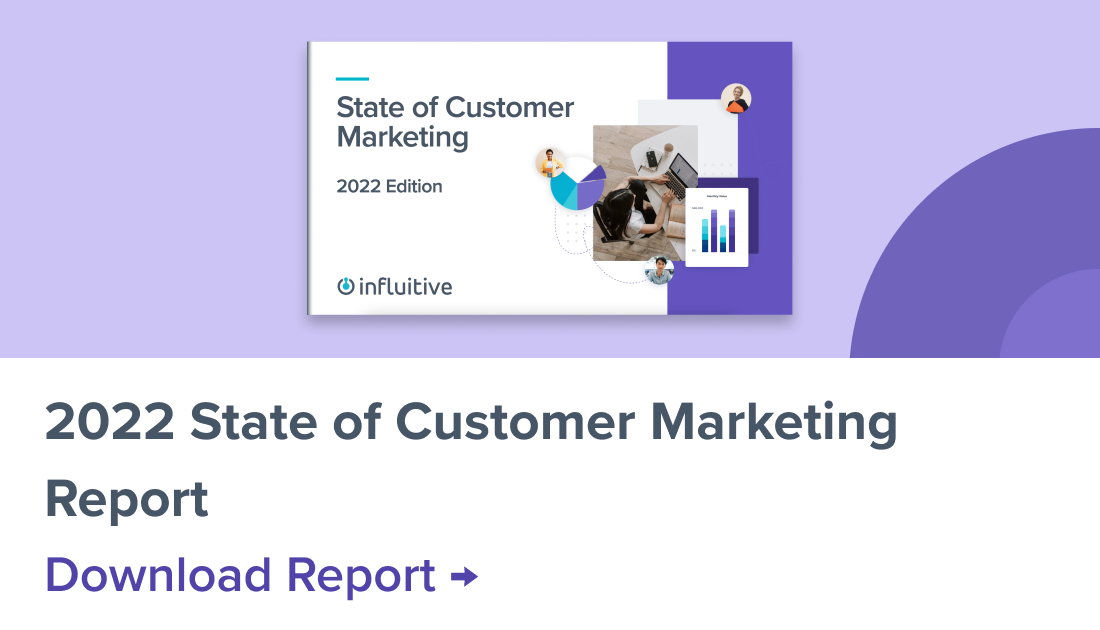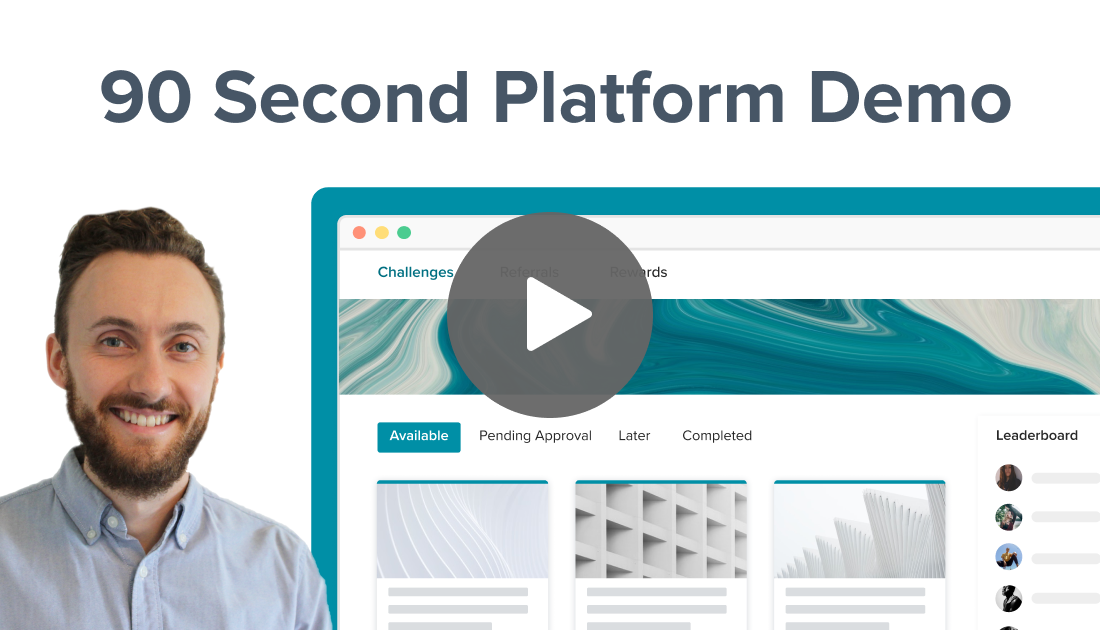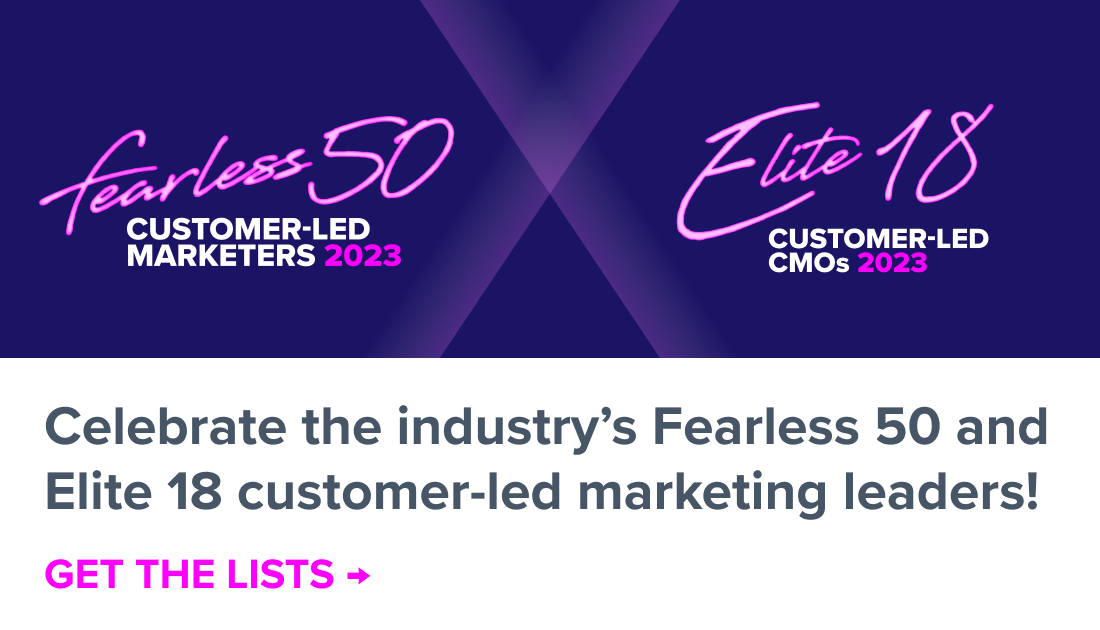HPE SimpliVity’s advocates are known to do radical things. For example, take reference calls while on vacation. Or send s’mores to each other’s kids. They’ll even drive three hours to a fellow customer’s office just to help them set up the optimal IT environment—all based off interactions in HPE’s online B2B community.
 At a time when 70% of all customer communities struggle to retain their users according to Gartner, SimpliVity advocates—typically CTOs and IT professionals—log in daily to join in lively group discussions, offer feedback on using SimpliVity’s hyperconverged platform, and welcome newbies. Where other communities resemble ghost towns, SimpliVity’s is a bustling metropolis where advocates go to help one another, and spend time with people they consider friends.
At a time when 70% of all customer communities struggle to retain their users according to Gartner, SimpliVity advocates—typically CTOs and IT professionals—log in daily to join in lively group discussions, offer feedback on using SimpliVity’s hyperconverged platform, and welcome newbies. Where other communities resemble ghost towns, SimpliVity’s is a bustling metropolis where advocates go to help one another, and spend time with people they consider friends.
So, what does SimpliVity’s advocate community, known as HPE Insiders, do differently? Who are these selfless people? And what does it take to maintain such a high level of engagement?
In this blog, Jennifer Susinski, customer marketer & advocacy manager at HPE SimpliVity, will reveal her top 3 secrets for building a rock solid online B2B community.
1. Online B2B communities thrive when admins get the flywheel going, and customers maintain it
Today’s customer communities are changing. Customers don’t rely as heavily on them to find technical documentation as they used to. Searching Google is sometimes faster, and portals are notoriously a place where documents are forgotten and rarely updated.

How easy are your technical documents to find?
Customers also have other ways to contact customer support. For better or worse, lots of support traffic has found its way to Twitter, where customers publicly point out bugs.
So, what do customers want from communities? No shock here: Its community—a feeling of fellowship with others who share common attitudes, interests, and goals. This is something Jennifer’s team discovered early on.
CMX found that 66 percent of survey respondents wanted, above all, to form relationships with other customers. This ranked higher than respondents wanting a direct relationship with their community manager, or expecting the community to have set goals and objectives (though they wanted those too).
When communities dry out and become ghost towns, it’s often because they failed to satisfy advocates’ need to connect with each other. Without the infrastructure to make sharing easy, new advocates are overwhelmed by the effort and pass through without settling in.
At SimpliVity, the peer relationships are considered paramount. “You have to know what people are there for” says Jennifer. “It’s important to hold focus groups around your customer experience. We found that people want to get to know each other. So that’s one of our goals.”
The SimpliVity team enables connections with a mix of technology and personal touch. They rely on Influitive’s customer community software AdvocateHub to host HPE Insiders. It offers gamification, discussions, and challenges to get people talking. The team can use that to spark self-directed conversations.
It often takes admins some initial work to get the flywheel going. But once it’s in motion and the community is engaged, it begins to work under its own power.
Jennifer sets the tone when new members join. Each customer receives a personalized “welcome to the family” message—no two are alike. They’re prompted to answer four questions monthly—three of them irreverent and one of them, technical. “I call it The Deep Dive and their answers get posted on the discussion boards where others can comment,” says Jennifer. “That helps foster conversation between peers.”
And with HPE Insiders, unlike many other communities, a flood of advocates respond—quickly.
This initial surge of comments surprises new advocates. They see that others are interested in what they have to say, that the community drives its own discussions, and that at first blush, HPE Insiders is a happening place with lots to discover.
2. Generosity and exclusivity are the keys to forming trusting relationships
Communities need reciprocity—a cycle of give and get. The fastest way to turn a community into a ghost town is to ask too much of members, too soon.
When new users are bombarded with requests to be a sales reference before they’ve even learned how the community can help them back, they suspect—perhaps correctly—that it doesn’t exist for their benefit. In the discover-nurture-mobilize (DMN) model for growing advocacy, companies can’t skip the nurture stage.
“There aren’t a lot of people who understand that advocacy has to be 50-50,” says Jennifer. “If it’s 60% for you, your users can tell, I promise. You have to give before you get. You have to show that you’re their champion within the company before they reciprocate.”
Jennifer should know. Her efforts at giving paid off when she hit more than double her quota for new advocate signups, and produced a raft of social proof and sales collateral. (More on that later.)
Jennifer sees her greatest gift as playing the role of busy dinner host, sparking conversation between guests. As her advocates discover shared interests, they generate value for one another in unexpected ways.
“Recently, two of my best advocates (Jim from Colorado and Matteo from Austria) sent me a photo of themselves before heading out to share a family dinner in Colorado,” says Jennifer. “They began their friendship within our discussion board, and it blossomed further at our “Purple Carpet Experience at HPE Discover.” They now have a strong bond that will last the test of time.

Advocates Jim and Matteo formed a strong friendship thanks to HPE’s discussion board
The fact that HPE Insiders is gamified helps tremendously. HPE SimpliVity advocates earn points for completing challenges such as participating in discussions and answering surveys. They can redeem points for rewards such as gift cards and donating money to charity. HPE Insiders also offers perks that will benefit advocates’ careers, such as being profiled in Upshot stories or tickets to HPE’s biannual customer event.

A look at some of the rewards HPE SimpliVity advocates can redeem
HPE Insiders is not for everyone, and its overt exclusivity is key to its appeal. Whereas other customer communities often grow crowded with salespeople and partners with misaligned interests, HPE Insiders is just for customers and strictly invite-only. It’s a safe space where customers drop their guard and are vulnerable and honest without the fear of being sold to.
This sort of exclusivity is a necessary ingredient for groups to bond, says event expert Priya Parker, author of The Art of Gathering. “If you invite everybody, you invite no one,” she writes in her book. “It’s only by closing the door that you create the room.”
Jennifer has no problem playing the role of bouncer. “I don’t allow straight up sales pitches within HPE Insiders or at our yearly gathering,” she says. For customers to want to join, they first have to trust that it’s a place just for them. It’s worked so well, users now enforce the rules themselves.
For example, each year, HPE Insiders holds two events where advocates meet the company’s executives and product team. “I get them in front of executives and they have loads of meetings with product management,” says Jennifer. “But the huge thing is peer-to-peer interaction.” That, she explains, is the biggest draw.
“This past June we were all in Las Vegas again. I had the option of doing a dinner with just us or getting to join this much larger VIP dinner,” says Jennifer. “I disobeyed my gut and we did the VIP dinner. The steak was amazing—you could cut it with a fork—but afterward, almost all of our advocates wrote saying that it had been loud and hard to hear each other. They’d rather have gone out for burgers and milkshakes just us, like we did the year before.”
Tight cohesion and self-enforced exclusivity leads to the kind of giving most companies only dream of. “Our advocates really have fun together,” explains Jennifer, “and it means there’s a huge difference in what we’re able to ask them to do.”
3. Focus on delight and peer-to-peer connections to see long term ROI
Mobilized communities are powerful and speak for themselves—often literally. One SimpliVity customer drove three hours to another customer’s office just to help them rearrange their IT infrastructure.
“The customer who needed help called me afterward and asked, ‘did you arrange that?’” recalls Jennifer. “I replied, ‘arrange what?’ Right after, I called the advocate who did the drive and he said, ‘that’s what we do, we help each other.’”
Another advocate was asked to take a call with Forrester as the agency compiled its newest Forrester Wave report. The call didn’t come until they had gone on vacation. Jennifer thought it might not happen. But, then the customer took the call from Vanuatu, a small Pacific island, anyway.

A view of the island getaway where one of HPE SimpliVity’s advocates took the Forrester call
Yet another advocate shows that they prioritize the community above nearly all else. “There is a CTO, I could call him right now and say ‘Hey, I have a reference call, and the person that was supposed to take it just cancelled. Is there any way that you can do it for me?’ and I know he’d rearrange his schedule,” says Jennifer. “Our community has built a relationship with him and not just the company he represents. It’s personal.”
All of this contributes to a program that Jennifer and the HPE team can reliably draw upon. “Any time customers see that you or their peers will go the extra mile to surprise and delight them, it has a huge impact on their retention and the number of acts of advocacy they’re willing to perform,” says Jennifer.
HPE Insiders is by all standards, a thriving metropolis of a customer community, and an engine for the company’s sales, marketing, and product teams. At a time before the team was using their community to its full potential, there were perhaps 4 discussions per month in HPE Insiders, with around 60 responses each.
Now that they’ve worked on fostering peer-to-peer relationships, there are 15-20 discussions each month, averaging 350 responses. Many are posted, moderated, and debated by the community on its own. And with over 800 members, there are more testimonials, case studies, and references available than ever before.
Each year, waves of customers ask to join the community based on stories they hear. When Jennifer hit 220% of her new signups goal based on word-of-mouth alone, the company had to rethink their quota.
“Imagine getting an email on a Friday asking you to submit five names to Gartner for the magic quadrant by Monday,’” says Jennifer, “and actually having those people who you can call ready, getting their responses immediately, and submitting their emails before end of day. You just can’t put a value on that type of engagement.”
Well-nurtured advocates become rain or shine references
Jennifer and the team at HPE Insiders know that their advocates’ success is their success. The time they invest in getting the flywheel of peer-to-peer interaction moving pays dividends when people wind up doing radical things in support of one another. The community watches after one another, and the whole operation scales beyond the advocacy manager. Everyone gets the fellowship they came looking for. And most importantly, they come back.
What can you do with a hyper-engaged community of advocates? Download our e-book How to Become A Customer-Powered Marketing Team to learn how to produce more leads, pipeline, and delight.
 At a time when 70% of all customer communities struggle to retain their users according to Gartner, SimpliVity advocates—typically CTOs and IT professionals—log in daily to join in lively group discussions, offer feedback on using SimpliVity’s hyperconverged platform, and welcome newbies. Where other communities resemble ghost towns, SimpliVity’s is a bustling metropolis where advocates go to help one another, and spend time with people they consider friends.
At a time when 70% of all customer communities struggle to retain their users according to Gartner, SimpliVity advocates—typically CTOs and IT professionals—log in daily to join in lively group discussions, offer feedback on using SimpliVity’s hyperconverged platform, and welcome newbies. Where other communities resemble ghost towns, SimpliVity’s is a bustling metropolis where advocates go to help one another, and spend time with people they consider friends.













































